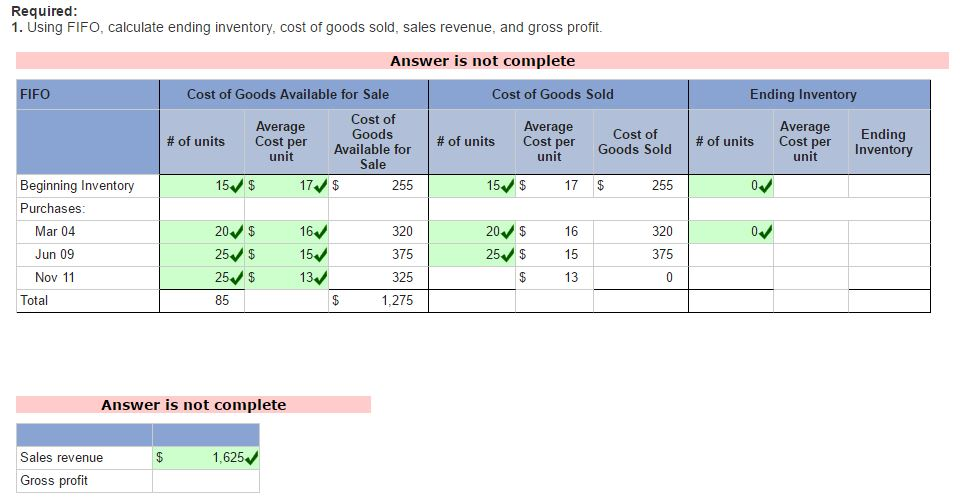The description could be an expense, revenue, liability, asset or equity entry. The general ledger stores all the transactions of the account and the journey entries. As we mentioned when we explained the chart of accounts, the chart of accounts is an overview of all the accounts in a business. It is like a table of contents but you can see every account in a business. This requires business transactions to be recorded in just one column, whether they are positive or negative entries.
Journal entries: Example
- Keeping a general ledger is foundational to your business’s financial success.
- The following are the steps to a proper general ledger accounts reconciliation in detail.
- A trial balance is a worksheet with the column of debit and credit corresponding to the rules of double-entry bookkeeping or dual aspect of accounting.
- This type of general ledger can be used by sole traders who sell their own services or products to customers.
- Transfer the debit and credit amounts from your journal to your ledger account.
The accountant would then increase the asset column by $1,000 and subtract $1,000 from accounts receivable. The equation remains in balance, as the equivalent increase and decrease affect one side—the asset side—of the accounting equation. There are two types of general Ledger such as the nominal ledger and the private ledger. The nominal ledger http://www.kpe.ru/sobytiya-i-mneniya/ocenka-tendencii-s-pozicii-kob/3270-great-game-of-the-global-predictor gives information on income, expenses, depreciation, insurance, etc while the private ledger is not accessible to everyone and gives private information on capital, salaries, wages, etc. Your general ledger might break these down into accounts for rent, merchant fees, software subscriptions, telephone and internet, cleaning, and so on.
How much will you need each month during retirement?
A business will create separate categories for such transactions – these are known as accounts. All account records of a company will be listed and contained within the general ledger, or principal book of accounts. Financial statements like the income statement, balance sheet, and cash flow statement show the financial health of a business. Business owners can generate all three statements using the accounting cycle, which includes the general ledger. However, reconciling individual account balances becomes extremely easy with online accounting software like QuickBooks.
Determine Which Features You Want To Include
It records and organizes all payment activity between your business accounts. You need a general ledger to show you the big picture of your business’s finances and growth. Bookkeeping ledgers are compilations of financial accounts for a business. They are a crucial http://ljrate.ru/post/6792/137449 component of any healthy business, as they assist in keeping a company running smoothly and making sure that all of the financial accounting details are correct. The above examples show that each transaction affects at least two accounts in the ledger.
Types of General Ledger Accounts
You also match general ledger account balances to source documents to see if the accounts are accurate. However, with online accounting software like QuickBooks, general ledger reconciliation has become a lot easier. As a result, such a record helps you in tracking various transactions related to specific account heads, and it also helps speed up the process of preparing books of accounts. As you can see, columns are used for the account numbers, account titles, and debit or credit balances. The debit and credit format makes the ledger look similar to a trial balance. Other ledger formats list individual transaction details along with account balances.
The Best Free General Ledger Template
This system acts as a master document detailing the business’s transactions over some time. These transactions are organized by accounts together with their dates, descriptions, and account balances—enough information to give you a bird’s-eye view of your business’s financial health. You may include individual assets and accounts like accounts payable and receivable, liabilities, inventory, and investments.
- This is the place where you consolidate all cash inflow and outflow, purchases, sales information, and other journal entries.
- This is done by comparing balances that appear on the ledger accounts to those on the original documents, such as bank statements, invoices, credit card statements, purchase receipts, etc.
- A general ledger is an accounting record that compiles every financial transaction of a firm to provide accurate entries for financial statements.
- However, with online accounting software like QuickBooks, general ledger reconciliation has become a lot easier.
- The GL is a detailed record-keeping tool, while the P&L (profit and loss) or the income statement reports a company’s profit during a period.
What is posting?
But once you get the hang of it, recording journal entries will be less intimidating. Although there are many possible accounts in a general ledger, they can all usually be classified into permanent and temporary categories. Let’s look at some of the accounts small businesses may use in the general ledger. In the first column, we see the type of account and the type of transactions within the account.
For instance, cash activity is usually recorded in the cash receipts journal. The account details can then be posted to the cash subsidiary ledger for management to analyze https://www.mishanita.ru/2009/08/20/756/comment-page-5/ before it gets posted to the general ledger for reporting purposes. Consider the following example where a company receives a $1,000 payment from a client for its services.
If you use accounting software, the software itself should guide you through the process of reconciliation. (If you work with an accountant, they’ll perform the same process using whichever accounting software their firm works with.) Generally speaking, you’ll follow these steps to reconcile your ledger. And your bookkeeper can always walk you through your GL if you have questions.

